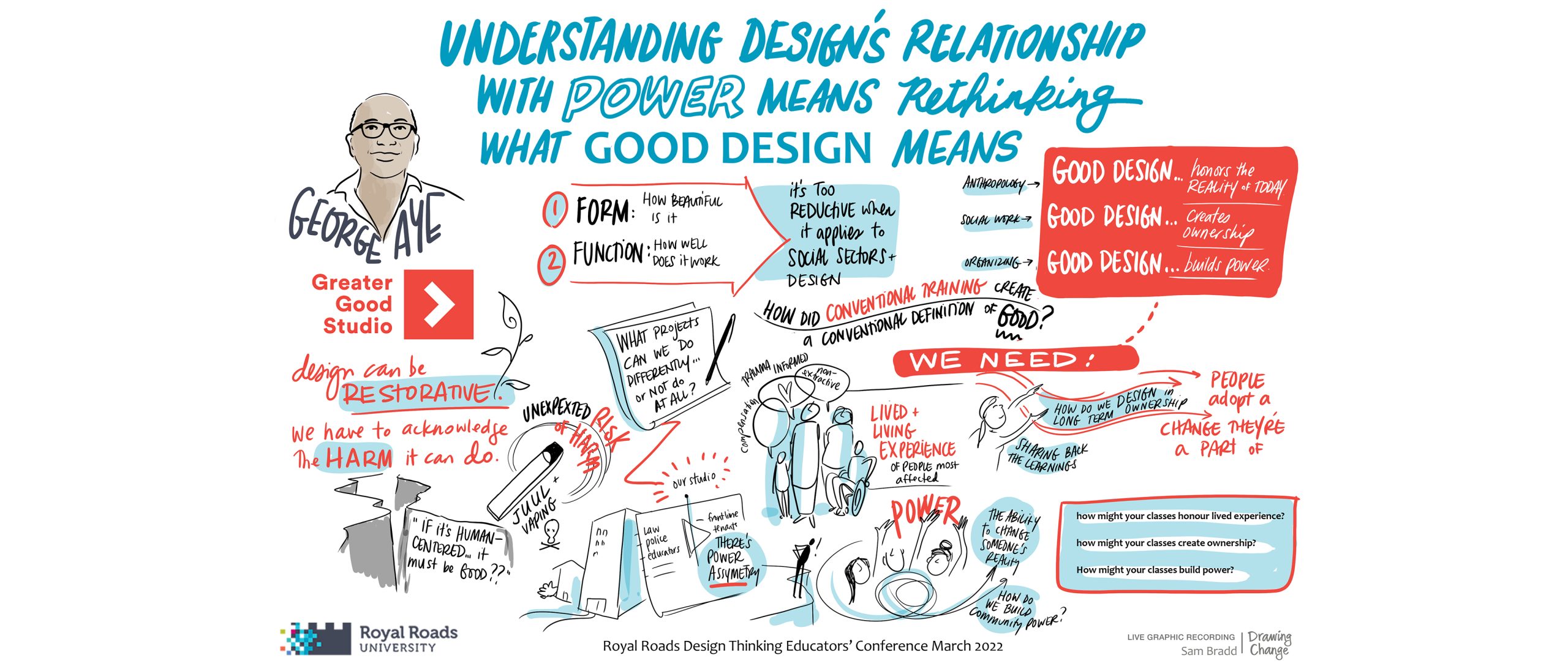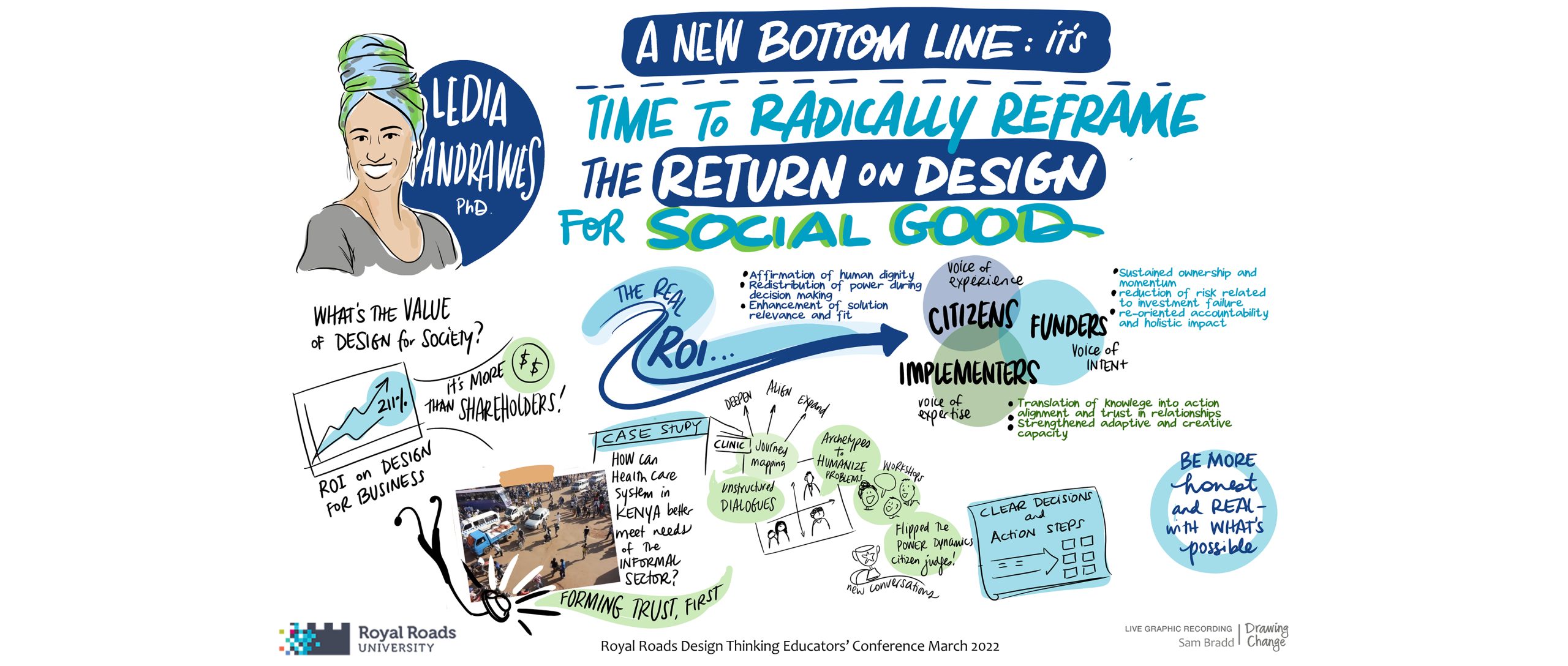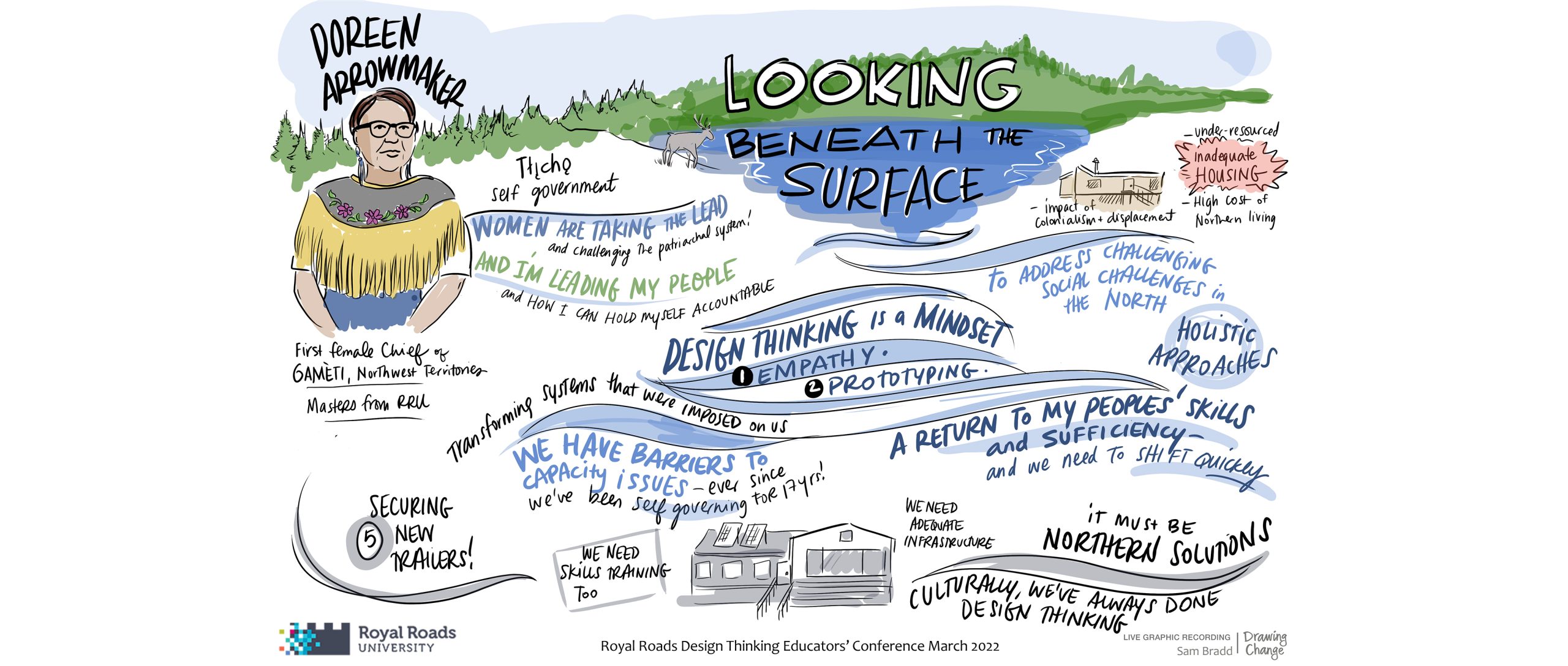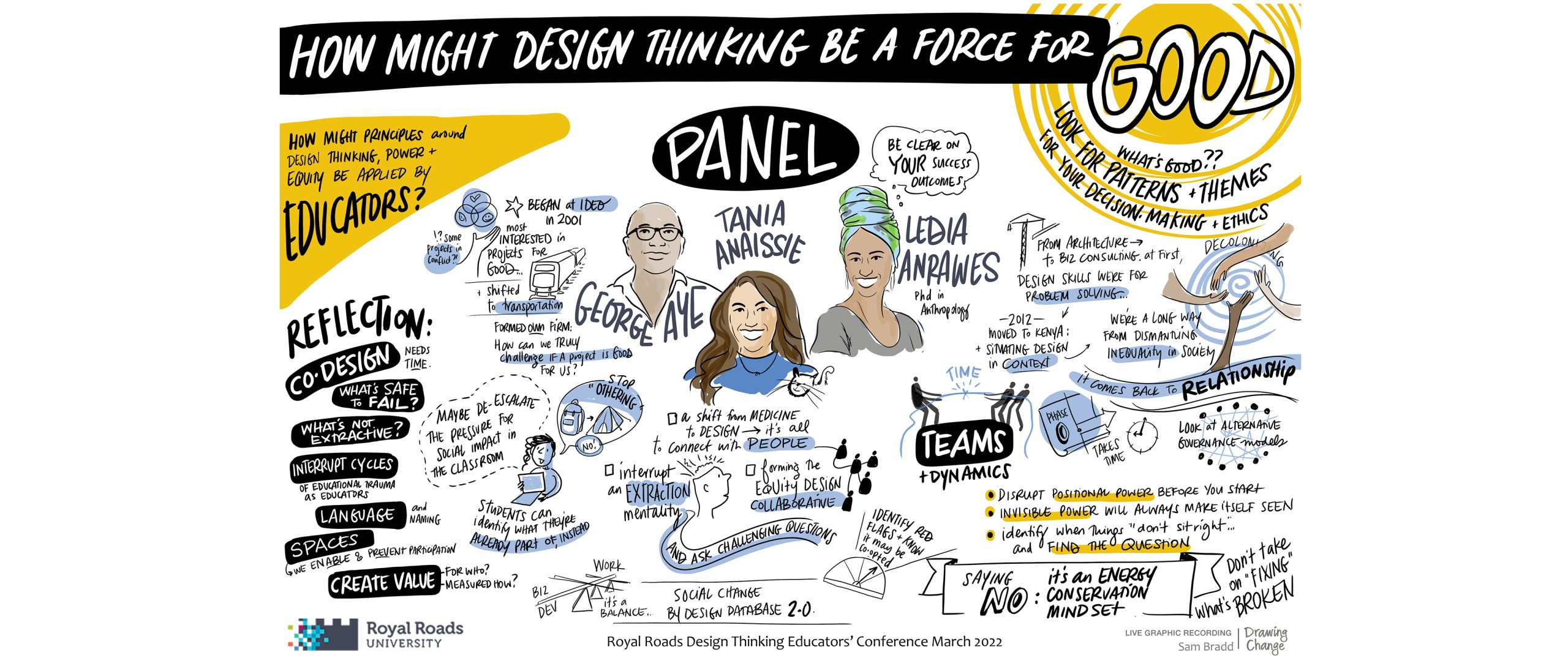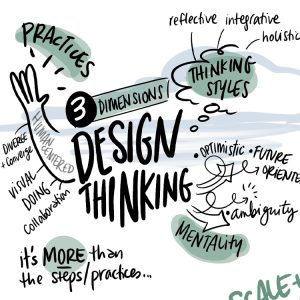DEI and Design Thinking Educators Conference
Diversity, Equity and Inclusion in Design Thinking Education - Royal Roads Conference
Design Thinking Education and Graphic Facilitation
One of the practices of Design Thinking is to connect visually – and graphic facilitation was woven in the RRU conference process. On the conference opening night, a graphic facilitation template helped document emerging questions. It was a rhizome metaphor – gingerroot stretching laterally across the page, with a place for participants could write down Design Thinking strengths and also the shadow side. The plant leaves reach up with questions that connect between stalks, connecting between the different stems. Participants in breakout group conversations used MURAL to add their insights with post it notes, and then graphic recording helped to distill and summarize the themes in real-time. That image – and the link to the MURAL – was emailed out overnight to all conference participants so all participants would be oriented at-a-glance to the themes on day 2.
Looking at Power, Diversity and Equity in Design Thinking
So many conference highlights! Tania Anaissie spoke about ‘re-designing design’ and aligning Design practices to Liberation values – and there’s a great toolkit to help. George Aye spoke about how design can be restorative -but we also have to acknowledge the harm. A shift can be to look at how “Good design honours the reality of today, creates ownership, and builds power.” Judy Mellett from Telus showcased a Service Design pilot project in long-term care that put new technology in the hands of residents with great outcomes. Ledia Andrawes (Australia) showed how it’s time for a new bottom line – where the real ROI is with citizens (the voice of experience), implementers (the voice of expertise) and funders (the voice of intent). Chief Doreen Arrowmaker (Gamèti) talked about how design thinking’s focus on empathy and prototyping is helping her address housing issues and more in the North. And a great panel brought many themes together.
Connections with Graphic Facilitation and Design Thinking
Graphic recording and graphic facilitation is both a practice and a mindset. I personally appreciated the 3 dimensions of design thinking written by Hassi and Laakso (2011): practices, thinking styles, and mentality and see how it relates to graphic facilitation in similar ways. The practice of this public listening and mark-making is by nature a human-centered approach. It’s both visual and active as we stand at the wall or show our drawing process on screen. As a thinking style, graphic recording can be used as a reflection process (participants can reflect on the images created by someone else, or the practitioner can be reflecting-in-action while drawing). It’s also an integrative process (using the images to spark conversation and new ideas), and a holistic way of being (using artmaking instead of only the written word).
Graphic Recording for Keynotes
On the main day of the conference we used graphic recording to engage all conference participants. The visuals documented keynote themes, highlighted questions, and made visual more connections in the field of Design Thinking education and equity. We uploaded graphic recording images after each keynote so participants could use them for reflection and to prompt other thinking.
Using MURAL for Co-Creating Meaning
The MURAL continued to be a place where conference attendees could share resources, give feedback, see all graphic recording images as a gallery – and co-create meaning.
Thank you to conference convenors and organizers especially Dr Amy Zidulka, Faculty of Management at Royal Roads University.


